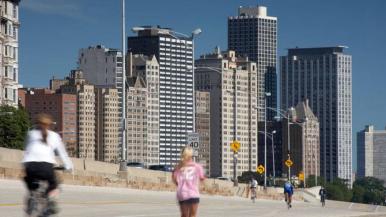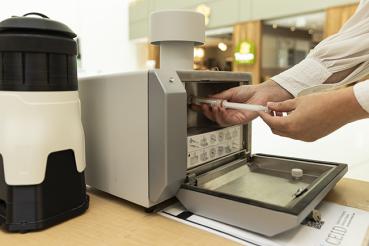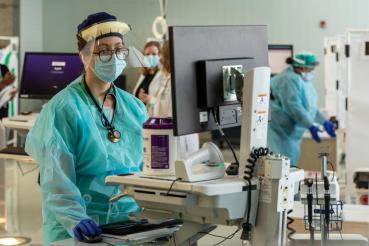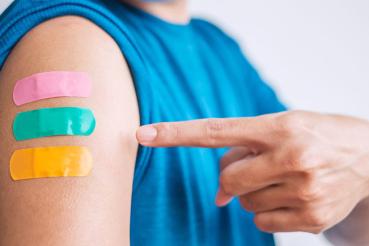Summer is in full effect, and as the weather continues to stay warm heading into the fall months, everyone is taking advantage to get out of the house and be a little more social.
Beautiful weather can make it tempting to participate in your traditional summer and fall activities — especially after being cooped up in the house for months on end in the spring. Baseball is finally back, football is on the horizon, and nothing sounds sweeter than a refreshing margarita at your favorite patio spot.
And let’s be honest, no one wants to let a Chicago summer — or the two weeks of perfect fall weather we get each year — go to waste.
However, while Chicago has reopened some restaurants for outdoor dining and parks have become available for small social gatherings, we have to ask the question, “Is it safe?”
Ask anyone in the Windy City and they’ll all tell you the same thing: We endure bitterly cold winters because a Chicago summer is the holy grail of all seasons. But this summer is different: part of it was spent with businesses closed and everyone working to flatten the curve of a pandemic. And while we all want to be out on the lake or at our favorite bar, it is vital that we stop and weigh the risks that come with our normal summer activities.
So, which activities are low risk? Which activities should you stay away from? And how can you tell if something is a high-risk activity?
Tiffany Wiksten, manager of Rush Infection Prevention and Control, and John Segreti, MD, an infectious disease specialist at Rush and hospital epidemiologist at RUMC and Rush Oak Park, answered these questions and gave us some insight on how to make decisions about which activities to engage in and which to skip — now and in the months ahead.
What makes an activity risky?
Wiksten and Segreti highlighted several factors that go into deciding if an activity or event poses a higher risk.
Major factors include:
- Indoor vs outdoor
- Ability to social distance
- Ability to practice universal face masking
“The lowest risk activities include those which can be performed or observed in outdoor locations with adequate social distancing,” Wiksten and Segreti explain. “The risk increases when there are more people congregating, closer together – even in an outdoor space.”
When making the decision to go out, make sure you keep these factors in mind. Is this in an outdoor space? Will I be able to keep a 6-foot distance from others? Will the people around me also be wearing masks?
The risk [of COVID-19 infection] increases when there are more people congregating, closer together – even in an outdoor space.
What’s the risk level of your favorite activities?
Along with understanding what goes into deciding the risk level of an activity, we asked Wiksten and Segreti to group common Chicago summer and fall activities together by their risk levels. They organized these activities into three categories: low, moderate to high and highest.
Low risk
These activities are considered low risk because they can be performed or observed in outdoor locations with adequate social distancing.
- Running on the lakefront trail: Going for a run can be pretty safe if you continue to practice social distancing. If the lakefront seems too crowded, it may be time to rethink your plans or come back at a different time.
- Bike riding: Like running, the same guidelines follow for bike riding: If it seems like the area you want to ride in is crowded, look somewhere else or rearrange your plans for a later time.
- Hiking: Hiking is a great way to safely get exercise in and get out of the house. These areas tend to be large enough to keep your distance from others, but make sure to avoid trails that seem crowded or overly popular.
- Outdoor dining with socially distanced tables: The trick to outdoor dining is making sure the restaurant you choose is following all social distancing guidelines. This includes tables 6 feet apart and masking guidelines. Other policies that restaurants use that help lower risk can include using online menus only and limited contact with servers.
Moderate to high
In outdoor locations where social distancing is more difficult to observe or people are less likely to observe social distancing, the risk is higher. While these activities may seem like a safe decision because they are outdoors, crowded outdoor spaces can still bring about the risk of exposure. These activities include the following:
- Going to the beach: The beach is a staple of a true Chicago summer. When it hits 90 degrees, there is nothing a Chicago resident wants to do more than pack a cooler and head East toward the lake. But take caution: The beach is a popular spot and once the beach opens back up, it may become too crowded to be a safe spot to relax.
- Taking a boat out on the lake: Being on a boat can turn into a high-risk activity if the boat becomes crowded and you don’t have the space to socially distance if need be. Limit the number of people on the boat, and wear masks if you can’t stay 6 feet apart at all times.
- Going to the farmer’s market: Summertime is the perfect time of year to acquire fresh fruit and veggies. As farmer’s markets begin to pop back up, make sure to survey the area before deciding to go. Will you be able to socially distance? Are people always wearing masks? Take in all major factors into consideration before making the decision to go. Many markets are now offering advance online ordering and curbside pickup, so do a little research to see if those are options for the markets in your area.
- Outdoor barbeque at a friend’s house: A backyard BBQ can be a low risk activity. But the risks do increase once the location leaves your home and moves to another because you won’t necessarily know in advance how many people will be there and if the people there have been properly socially distancing. Sharing food and utensils is also risky and, therefore, not recommended.
Highest
The highest-risk activities include activities that are indoors or confined, and crowded outdoor spaces. It may be tempting to throw a party or go to a bar given that Chicago is in Phase 4 of reopening, but these activities can be a serious threat to your health and others around you.
- Going to bars: Going to bars is a very high risk activity. Bars can end up being crowded, confined spaces that make it hard to socially distance. And even with capacity restrictions, the fact that people are actively moving around in an indoor space, as well as having contact with bartenders numerous times, can pose a serious problem and skyrocket your risk for exposure.
- Hosting a Cubs/Sox watch party: Baseball is back, and whether you love the team from the North Side or South Side, one thing rings true: Chicago loves a day filled with MLB baseball. Having a baseball watch party at your or a friend’s home may seem like a safe bet. But don’t start making the Chicago dogs just yet. Having a large number of people gather at anyone’s home can be risky – especially if you are unsure if others are safely socially distancing. Having a large number of people in a confined space like an apartment or condo is an easy way to raise your risk for infection. If you want to watch the game with friends, opt for a small gathering or go virtual with a Zoom/Google hangout.
“The highest-risk activities are those which occur in enclosed or confined spaces, with little or no outdoor ventilation,” Wiksten and Segreti explain. “They may also include outdoor activities in which people who do not live in the same household are closely congregated and not observing social distancing, including wearing masks properly and at all times. “
Additional activities:
Wiksten and Segreti added that there are a few activities — specifically nail and hair appointments -- that can also be considered low risk as long as the proper guidelines are followed. These guidelines include universal masking for all parties involved and refraining from the activity if any signs or symptoms of illness are present.
Weigh the risks before you make plans
This summer doesn’t have to be a bummer. There are a variety of activities and events that you can participate in and observe while continuing to protect yourself and others around you. Whether this be hiking, outdoor dining or a small gathering of friends who are actively socially distancing, this summer — and fall — can still be one for the books.
Knowing your risks, weighing your risks and protecting your community as you begin to venture out is the key to staying safe. Always remember to look at the major factors of an event or get together and ask yourself these three important questions:
- Is this event indoor or outdoor?
- Can I adequately socially distance?
- Will the people around me – as well as myself – have the ability to universally mask?
If the answers to these questions lean to indoor spaces, and no ability to safely distance and mask, it is best to rethink your plans and find a better suited activity.
Deciding to treat this summer like any other is not only dangerous for your health but can also be a contributing factor to a rise in COVID-19 cases, ultimately moving Chicago’s reopening phases backward instead of forward. The decisions you make now have the potential to impact your summers to come.
So, go out and get your sunshine and relaxation in before winter rears its ugly head again, but remember to make activity choices that will keep you and your community safe as the fight against COVID-19 continues.




